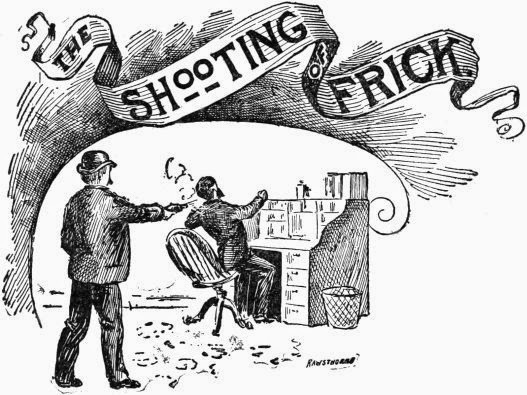Thomas Cromwell, Thomas More and "The Most Hated Man in America"
With the television series "Wolf Hall" stirring up a frenzy of interest in Thomas Cromwell, the brilliant and ruthless chief minister of Henry VIII, I found myself wanting to take another look at the man himself.
By that I don't mean I wanted to look upon the 471-year-old remains of Cromwell, currently interred somewhere beneath the floor of the Chapel of St. Peter-ad-Vincula, in the Tower of London.
No, I yearned to look at the portrait of Cromwell by Hans Holbein the Younger, the best known image of the Lord Privy Seal. And to do that, I needed to head over to 70th Street and Fifth Avenue, in New York City. Inside a beautiful mansion called The Frick Collection you will find Cromwell:
 Thomas Cromwell, painted by Holbein in 1532 or 1533And he's not alone.
Thomas Cromwell, painted by Holbein in 1532 or 1533And he's not alone.Another Tudor-era painting hangs on the same wall of the room, on the other side of the fireplace (above which hangs an El Greco). The artwork that Cromwell is paired with is Hans Holbein the Younger's painting of Sir Thomas More, philosopher, lawyer, royal councilor--and victim of Henry VIII. More would not compromise his values and sign the oath of supremacy to the king. The royal advisor who pressured More to sign the oath and then engineered his treason trial was none other than Thomas Cromwell, a man with whom More had once been on friendly terms.
 Sir Thomas More, painted by Hans Holbein the Younger, 1527
Sir Thomas More, painted by Hans Holbein the Younger, 1527The two Tudor statesmen's portraits hang in the Living Hall of the Frick Collection, a lushly masculine space of oak-paneled walls, 18th century furniture and ceramics and bronzes that is supposed to have been kept unchanged since Henry Clay Frick occupied his house in the early 20th century.
 The Living Hall, with Cromwell and More on either side of the fireplace
The Living Hall, with Cromwell and More on either side of the fireplaceThe Frick Collection is considered one of New York City's chief art treasures, filled with paintings by Rembrandt, Vermeer, Fragonard, Goya, Bruegel, Gainsborough, Van Dyck, Titian and Turner. It was Frick who bought these paintings, in a frenzy of purchases that ended during World War I.
Yes, Frick was one of the premier collectors of the Old Masters in all of America. But just as there were many sides to Thomas Cromwell and Thomas More, there is much more than art appreciation to Frick. In fact, he was for a time widely known as "the most hated man in America."
To learn why he was so despised, we need to head west, to Pennsylvania, where Frick lived for most of his life. His parents were rural Mennonites. At the age of 21, he formed a partnership with cousins and friends called Frick Coke Company--using a special oven, they turned coal into coke for steel manufacturing. By the early 1880s, Frick controlled most of the coal output in the entire state.
 Henry Clay Frick
Henry Clay FrickFrick took his place on the national stage when he became partners with Andrew Carnegie of the Carnegie Steel Company. In 1892, the violent Homestead Steel Strike, which Frick provoked as a way to break the union, earned him the nickname the "Most Hated Man in America."
Frick brought in 300 Pinkerton guards after the steelworkers went on strike, leading to an epic all-day battle leaving 16 men dead and many more wounded. The governor was forced to call in 8,000 militia to restore order.
Alexander Berkman, an anarchist and lover of Emma Goldman, tried to assassinate Frick in his Pittsburgh office. Carnegie, who didn't want the labor wars to tarnish his business reputation, was in Europe during the strike but approved of breaking it from afar. After repelling Berkman, who was armed with a knife and a gun, Frick cabled Carnegie: "Shot two times...no necessity for you to come home. I am still in shape to fight the battle."

An illustration drawn in 1892
In 1901, Frick moved with his family to New York City. He was now a fabulously wealthy director of J.P. Morgan's United States Steel Corporation, and he decided to spend some of his millions on art. This was a period of fierce competition for the finest paintings in Europe. Frick was often going after the same masterpieces as Morgan, sugar magnate H.O. Havemeyer and Boston philanthropist Isabella Gardner. Some of the oldest families in England were in a financial crisis, trying to hang onto their centuries' old estates. The art dealers who descended, representing American "robber barons," could not have come at a better time.
Frick bought the painting of Sir Thomas More in 1912 and the one of Thomas Cromwell in 1915. Frick very much wanted to buy Holbein's painting of Christina of Milan, but it escaped his grasp.
 Painting of Frick and his devoted daughter, Helen.
Painting of Frick and his devoted daughter, Helen.Frick had fallen out with Andrew Carnegie years ago; lawsuits and acrimony followed. But in their senior years, the two men both lived in New York City. Frick was building an art empire; Carnegie was writing books, funding libraries, and donating huge amounts of money to educational and artistic causes. Carnegie Hall on 57th Street, built in 1891, is one of the world's premier concert venues.
In 1919, when Carnegie, 83, was dying, he sent a message to Frick seeking reconciliation. The note traveled from one man's mansion to the other's. "Yes, you can tell Carnegie I'll meet him," Frick responded. "Tell him I'll see him in Hell, where we both are going."
Just months later, Carnegie and Frick were both dead.
 The Frick Collection, Fifth Avenue and 70th street.
The Frick Collection, Fifth Avenue and 70th street.In 1935, the Frick Collection opened its doors to the public. Art lovers could enjoy the exquisite sculptures and paintings, including the Holbein portraits of More and Cromwell, two men who underwent a different struggle in a different time, and yet now inhabit the same room, thanks to one of the most combative men in all of America.
Published on February 24, 2015 13:52
No comments have been added yet.



